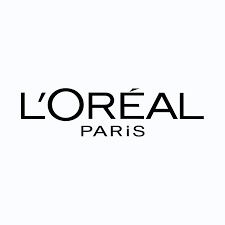Loreal Q3 2024 $OR (-1,33 %)

Financial performance
L'Oréal recorded sales growth of 6.0% in the first nine months of 2024, amounting to €32.40 billion. This growth was consistent both on an adjusted and underlying basis, although the company faced several external challenges, particularly in North Asia. L'Oréal continues to outperform the global beauty market, driven by its innovation and resource redeployment strategies.
Income statement
Sales growth in the different divisions and regions indicates a positive impact on revenues. The Consumer Products Division and the Dermatological Beauty Division showed significant growth, with the latter increasing by 11.3% on an adjusted basis.
Cash flow analysis
The expected impact of the French tax changes in 2024 and 2025 will affect cash flow, with an estimated additional tax burden of EUR 250 million.
Key figures and profitability
The company values margin protection and a steady improvement in the margin, despite increased spending on advertising and promotion (A&P).
Segment analysis
- Professional Products: Grew by 5.8% adjusted, driven by innovations in hair care and hair color.
- Consumer Products: Recorded an increase of 6.4% adjusted, with strong performance in hair care and makeup.
- Luxe: Grew 3.4% adjusted, with strong performance in fragrance.
- Dermatological Beauty: Grew 11.3% adjusted, outperforming the market, despite a slowdown in the US.
Competitive analysis
L'Oréal continues to gain market share in key regions and categories, particularly in luxury and dermatological beauty. The company is leveraging its broad brand portfolio and innovation capabilities to outperform competitors.
Forecasts and management commentary
Management is confident that sales and operating profit will increase for 2024 and is planning a beauty stimulus plan for 2025 to drive further growth. The company expects the global beauty market to grow back to pre-COVID-19 levels by 2025.
Risks and opportunities
- Risks: The challenging market conditions in North Asia, particularly in China, pose a risk to growth. In addition, the impact of the French tax changes could affect profitability.
- Opportunities: The acquisition of a stake in Galderma and the focus on innovation in dermatological beauty offer significant growth opportunities.
Summary and strategic implications
L'Oréal's strategic focus on innovation, market share gains and resource redeployment has enabled the company to maintain robust growth despite external challenges. Investments in dermatological beauty and strategic acquisitions position L'Oréal well for future growth. However, the company must overcome challenges in the Chinese market and manage the impact of tax changes to maintain its performance.
Overall, L'Oréal's strategic initiatives and market positioning point to strong potential for continued growth and market leadership in the beauty industry. My entry price would therefore only be around 340 euros, although I already have some investment via nestle.
Positive statements
- Sales growth: L'Oréal posted solid sales growth of 6.0% in the first nine months of 2024, reaching 32.40 billion euros, showing resilience despite external challenges.
- Market superiority: The company continues to outperform the global beauty market, driven by its innovation and the agility of its teams.
- Segment success: The dermatological beauty division grew by 11.3% on an adjusted basis, significantly outperforming the market.
- Strategic acquisitions: The acquisition of a 10% stake in Galderma positions L'Oréal to expand its dermatology solutions and leverage synergies in skin biology.
- Innovation and resource allocation: L'Oréal's focus on innovation and strategic reallocation of resources has enabled the company to maintain robust growth and market share gains.
Negative statements
- Challenges in North Asia: Sales in North Asia declined by -3.0% adjusted as the Chinese market continues to deteriorate due to low consumer confidence.
- Impact of French tax changes: The expected impact of French tax changes in 2024 and 2025 could affect cash flow, with an estimated additional tax burden of €250 million.
- Slowdown in the US market: The US market has slowed down, affecting the dermatological beauty division in particular, which saw a noticeable decline in growth.
- Pressure on inventories: American retailers have become more cautious about their stock levels, particularly in mass and drugstore markets, which could have a negative impact on sales figures.
- Delayed product launches: The recovery of the makeup category has been gradual, with new product launches delayed, which may have delayed potential growth.


